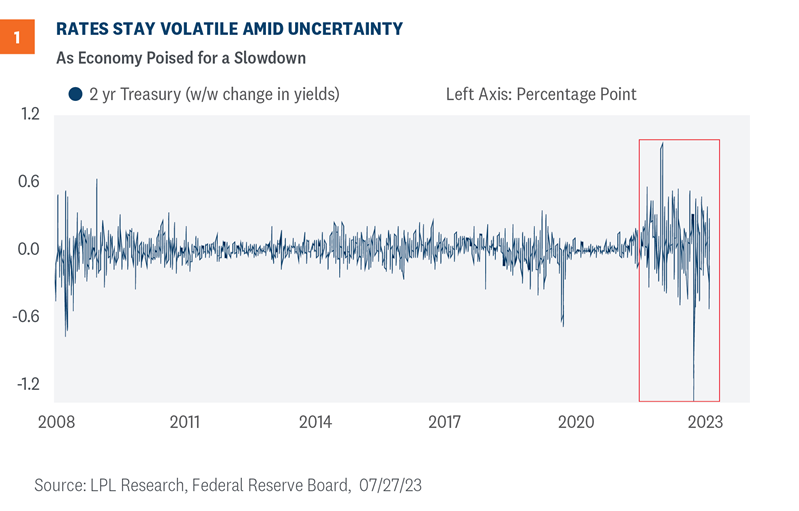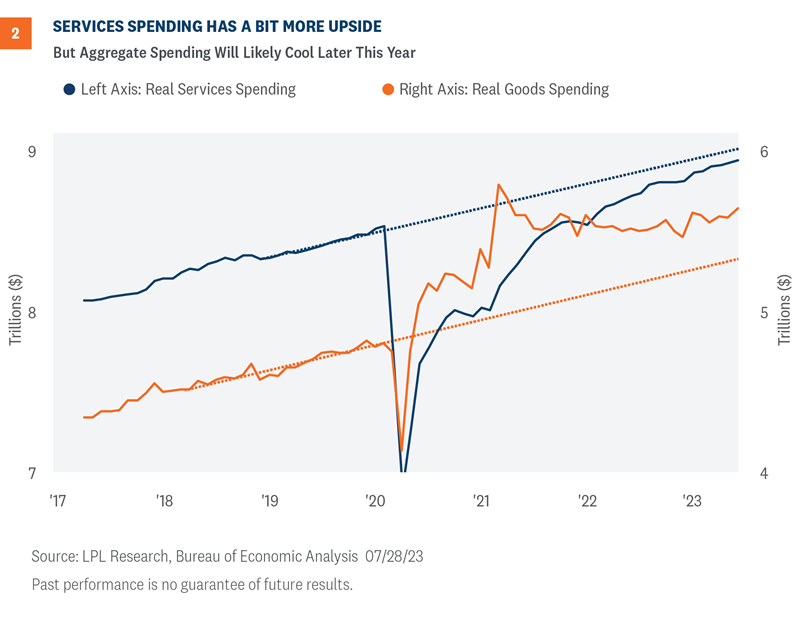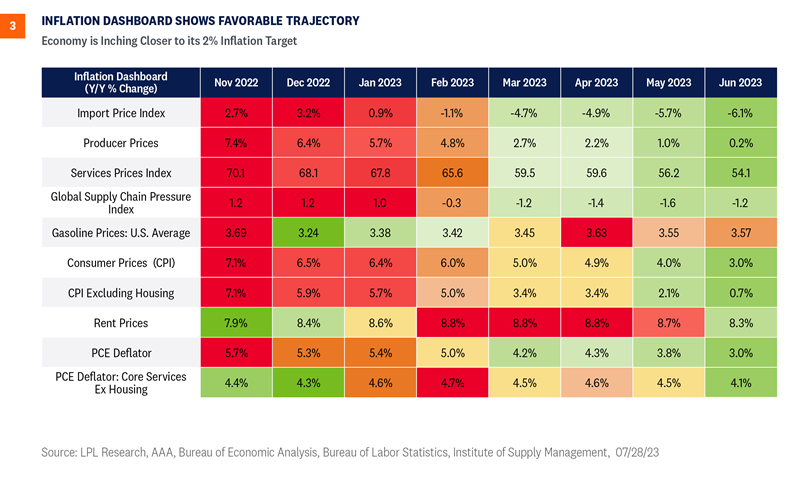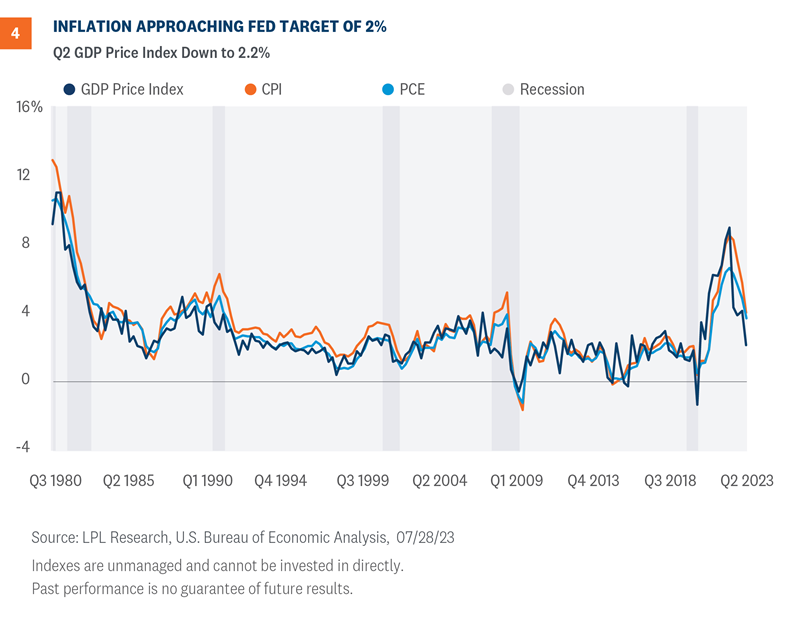The economy is doing better than expected, and the markets are responding accordingly. In this piece, we discuss some of the factors that cause us to think the Federal Reserve (Fed) hiked for the last time in this cycle as inflation is receding and the outlook for the consumer looks cloudy. We close the piece with investment implications.
Key Takeaways
- Fixed income markets are volatile as the macro outlook is unclear.
- Growth for the latter half of the year could be much softer than the first half.
- Credit card debt reached a new record high at a difficult time when credit card rates spiked.
- A Fed pause is increasingly likely in September, supporting the case for staying fully invested
Yields are especially volatileYields on the 2-year Treasury note are more volatile now compared to a few years ago. As shown in Figure 1, the week to week change in yields has been larger during the past two years than they were in previous years and are unnervingly similar to behavior during the Great Financial Crisis (to be clear, we do not expect a repeat of 2008). Investors seem to have strong opinions about the direction of the economy, but the lack of clarity has made the fixed income market especially volatile. What we do know is that after the most aggressive rate hiking campaign in decades, the Fed headwind could be coming to an end, which has historically been a good environment for core bonds.


As it relates to general market sentiment, investors can find plenty of both bears and bulls, but maybe the bulls are in the majority. One reason for the wide dispersion of views and the plethora of bulls is the substantial upside surprises in macro data and earnings. The frequency with which economic data beats expectations has surged recently to historically high levels, lowering the probability of a recession this year.
As it relates to equities, consumer discretionary is tracking to a 36.3% year-over-year earnings gain, with a 14% average upside—the biggest positive surprise so far among the 11 S&P sectors. Overall, S&P 500 earnings are surprising by an average of 6%.
Inflation dynamics appear more favorableThe Fed’s preferred annual inflation metric decelerated to 2.96% in June from 3.82% the previous month as overall inflation pressures eased. Core inflation, excluding food and energy, also decelerated to 4.1% in June from 4.6%. Goods prices in June are outright lower than they were a year ago, for both durable and nondurable goods, revealing the decline in consumer demand for goods. Services prices are driving the inflationary dynamics right now as the services spending splurge continues.
Goods prices declined three of the last four months, pulling the annual rate of goods inflation down to -0.6%, the lowest since 2020. Services inflation is also cooling, but it’s still too high as consumers concentrate their spending on services. If inflation metrics continue to cool, investors should expect the Fed to pause at their next meeting in September. The key takeaway for investors and policy makers is inflation is heading in the right direction, giving the Fed some leeway as they consider what to do at their next meeting.

If demand slows in the coming quarters, we should see inflation metrics fall even further. Investors should pay close attention to unpaid credit card balances for signs of any cracking within the consumer sector. Stubborn inflation is one reason credit card debt has spiked this past year. In Q1 of this year, credit card debt rose to a record $986 billion, roughly $60 billion higher than the previous peak in 2019. Amid rising balances, credit card rates were 20.86% in May, an all-time high since the data series began in 1972, putting additional pressures on consumers.
As the economy searches for stability, we think the inflation dynamic will continue to improve throughout the year as the economy slows and the Fed pauses. Despite some concern about the difficulty of achieving a 2% inflation target, inflation is approaching the Fed’s long-run target as shown in Figure 4. In Q2, the GDP price index fell to 2.2%, the lowest since the depths of the 2020 pandemic.

LPL’s Strategic and Tactical Asset Allocation Committee (STAAC) recommends a neutral tactical allocation to equities, with a modest overweight to fixed income funded from cash. The risk-reward trade-off between stocks and bonds looks relatively balanced to us, with core bonds providing a yield advantage over cash. A Fed pause has historically been a positive for core bond investors.
The STAAC recommends being neutral on style, favors developed international equities over emerging markets and large caps over small, and maintains the industrials sector as its top overall sector pick.
Within fixed income, the STAAC recommends an up-in-quality approach with benchmark-level interest rate sensitivity. We think core bond sectors (U.S. Treasuries, agency mortgage-backed securities (MBS), and short-maturity investment grade corporates) are currently more attractive than plus sectors (high-yield bonds and non-U.S. sectors) with the exception of preferred securities, which look attractive after having sold off due to stresses in the banking system.

